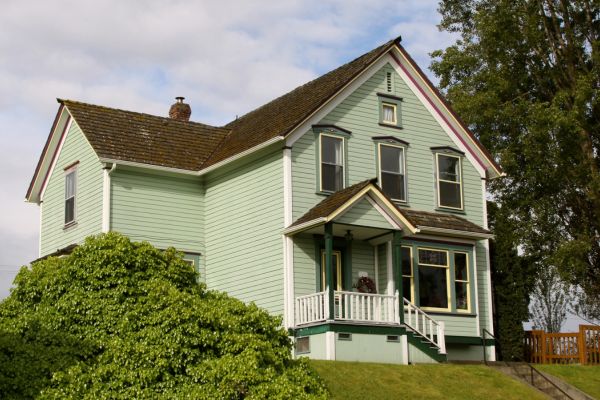
08 Nov Are Older Houses Harder To Insure? Here’s What To Know
There’s a lot to consider when it comes to buying a home in New Zealand, including location, size, layout and, of course, house insurance. If you’re in the market for an older home, you may be wondering whether the age of the home could impact the cost of your house insurance. Or if an older home can even be insured! Insuring older homes may come with certain considerations, so it’s important you carefully research NZ insurance for older homes before making an informed decision.
Can I insure my older home?
If the home you’re considering buying was built before 1940, it may be harder to get house insurance. Older homes were subject to different building standards in the past, and most insurance providers in NZ consider older properties a higher risk.
The good news is that there are some insurance providers in New Zealand that offer insurance coverage for older homes. However, there may be variations in the types of coverage and terms available, and it’s worth noting that the insurability of an older home isn’t based solely on its age, but rather on a combination of factors.
Will the age of my home affect my insurance premiums?
The age of the home can influence the cost of your insurance premiums. Older homes can have a higher likelihood of certain issues – including weather-tightness or fire risk – because of wear and tear, outdated systems, or a lack of modern safety features. However, this doesn’t mean that insuring an older home is prohibitively expensive. It’s all about assessing risks and taking appropriate measures to mitigate them.
What should I be aware of when buying an older home?
As house insurance is usually a condition of property finance, when buying an older home, it’s essential you conduct thorough due diligence. Here are some key points to keep in mind:
- Building materials and construction: In the past, homes were often constructed using materials that are no longer common today and may be considered a fire hazard. Older homes with walls lined with scrim or sarking – hessian sacking stapled to thin wooden strips – may not be insurable because of the increased risk of fire. Before purchasing, it’s advisable to get a professional inspection to assess the condition of the property’s structure and to factor in the cost of removing any scrim and sarking lining the walls before it can be insured.
- Maintenance and upgrades: Older homes that have been well-maintained and upgraded over the years may be easier to insure. Replacing the original roof or rewiring the electrical circuits, for example, would greatly improve the property’s insurability and reduce the potential risk that insurance providers may perceive with an older home.
- Meeting certain safety standards: Older New Zealand homes were often clad in weatherboard constructed from native timber. These homes require ongoing and frequent maintenance and may be prone to issues with weather-tightness. Additionally, it’s not uncommon for older homes to have foundational issues and problems with the piling. It’s important to verify that the property meets certain safety standards. If the home hasn’t been brought up to these standards, it could result in the property being uninsurable.
- Historical classification: Older homes that have a local council or government historical classification have strict rules around preserving the building style of the home. To ensure the replication of historical or unique architectural features, repairing and rebuilding such homes requires the use of specific materials and specialised labour skills, which can incur additional costs. These expenses are taken into consideration by insurance providers and can often result in higher premiums.
What other factors can affect the cost of house insurance?
While the age of the home is a consideration, there are other factors that can impact the cost of insurance premiums for older homes:
- Safety measures: Rewiring and installing a security system, alarm, and smoke detectors can help lower insurance costs by reducing the risk of theft, fire, other incidents.
- Claims history: If the property has a history of multiple insurance claims, it could increase the cost of house insurance premiums. Investigate the property’s claims history and the impact any past claims could have on your own house insurance costs.
- Rebuilding costs: Due to the potential complexities of rebuilding an older home, house insurance premiums may be higher, while accurately estimating rebuilding costs is critical to ensuring you have enough insurance coverage.
Addressing house insurance concerns
If you are considering buying an older home, it’s important to address any insurance concerns early on in the process. Before making an offer, check that the property is insurable. Consult with an experienced Insurance Adviser, such as those at Max Insurances, who can provide you with valuable insights and assistance in assessing whether an older home can be insured. With the right information and guidance, you can get the house insurance you need to protect your investment and the things you love.
Request a Call Get a QuoteFind this article helpful? Don’t forget to like it or share it on Facebook.


